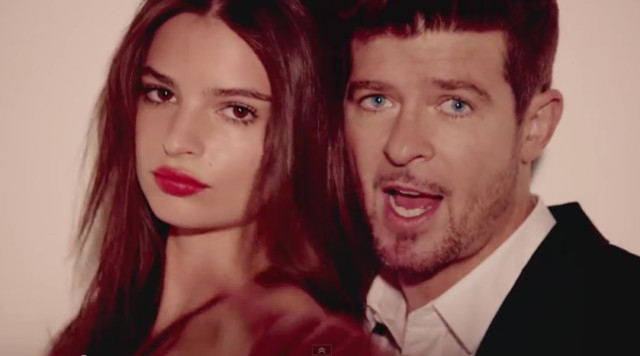
It’s been a tough few weeks for thirtysomething men making RB-infused pop. On Monday, the ban on Justin Timberlake’s video for Tunnel Vision was lifted, just days after it was prohibited by YouTube owing to its sexual content.
The site deemed seven minutes of nearly bare women dancing like po-faced Pan’s People acceptable thanks to its supposed artistic merit, so it now comes with a content warning and a request that users first log in to verify their age: “While our guidelines generally prohibit nudity, we make exceptions when it is presented in an educational, documentary or artistic context, and take care to add appropriate warnings and age restrictions,” a Google spokesperson told ABC news.
Robin Thicke’s video for Blurred Lines wasn’t granted the same level of forgiveness, but that doesn’t seem to have hindered the success of the track, which is now the second-biggest-selling single of 2013. Blurred Lines has been the subject of much controversy in recent weeks as the video, featuring numb-looking models strutting across the screen in flesh-coloured G-strings, was taken down from YouTube. You can, however, still watch it through Vevo, the music video streaming site that shares an ad revenue split with YouTube.
In the case of both singles, more than 1m views were achieved just days after they were uploaded. Whether viewers were revelling in their laddish audacity or fuming about the objectification of women, the clips led to a frenzy of social media debates, news bulletins and views. Based on their success, it’s likely that similar dirty tactics could be used to gain attention for future new releases. Ever since Billboard announced that it would take paid-for streams into account when compiling its Hot 100 chart, online videos have become an increasingly vital tool for artists operating in the US market. The Recording Industry Association of America determined that 100 streams would now equate to one single physical purchase of a single. This means that that an artist could now go platinum after 100 million streams.
YouTube channel partners can now collect up to 55% of revenues from each monetised view on the site, with a large chunk of that percentage going directly to the owners of the song’s publishing and masters. It is predicted that the South Korean popstar Psy, for example, collected as much as $2 million in revenue from YouTube views of Gangnam Style alone.
These videos have had an undoubted impact on the public’s perception of the artists. Both Timberlake and Thicke have reached an awkward middle ground in their careers, caught somewhere between Bieber and Bubl. In some ways, these videos can be seen as a kind of mid-life crisis; both men trying desperately to cause a stir and boost their playboy reputations. Depressingly, it seems to have worked.











